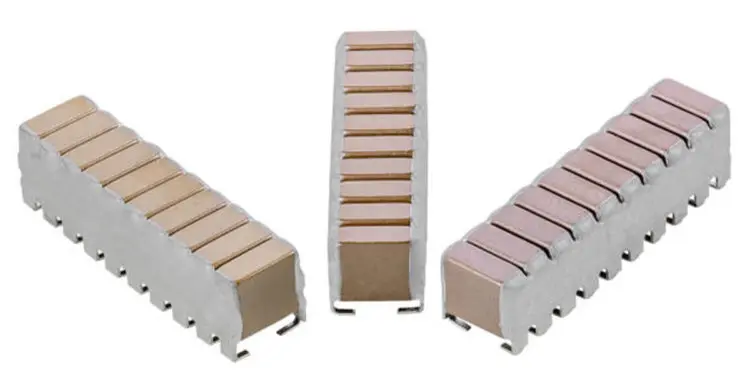Knowles Precision Devices, a division of Knowles Corporation, recently expanded its capacitor assembly offering with the release of its new SV series of capacitor assemblies for power supply filtering applications. The SV series is a vertically stacked ceramic capacitor, offering superior performance compared with aluminium or tantalum electrolytic capacitors, while also helping to reduce the overall circuit board footprint.
“We are excited to introduce our SV series of capacitor assemblies, which will enable us to better meet the demands of customers’ power supply filtering needs,” said Dan Callen, Product Manager, Knowles Precision Devices. “The assemblies can be made with up to ten chips of the same size with various lead configurations to safeguard against thermal and mechanical stresses. Maintaining our high standards of quality and durability, the SV series is 100% tested for dielectric withstanding voltage, insulation resistance, capacitance and dissipation factor.”
The SV series is ideally suited for the input and output stages of switch mode power supplies and DC-DC converters. SV series capacitor assemblies are available in the X7R dielectric with a high capacitance-to-volume ratio. Low equivalent series resistance (ESR) and low equivalent series inductance (ESL) are inherent in the SV series design, which gives the assemblies the capability to handle high ripple currents at high frequencies.
X7R dielectric is used and values of 14, 22, 27, 47, 68, 100 and 220μF are available, at 100, 50 or 25V. Not all combinations are available – there are nine versions in all, essentially a 3-stack, a 5-stack and a 10-stack at each voltage.
Parts range in length from 9.5 to 27.3mm, and there are bend lead (pictured) and straight lead versions.
ESR (series resistance) is well below 100mΩ at 1kHz for all parts, and can be as low as 100μΩ at 400kHz. Since ripple current can cause self-heating (I2R) losses and degradation in a capacitor, reducing ESR helps minimize these impacts, resulting in less power loss and improved reliability.
Leveraging 50-plus years of industry knowledge and expertise, Knowles Precision Devices has a proven heritage of designing high-reliability capacitor assemblies with its patented Cap-Rack technology. Cap-Rack capacitor assemblies bond chips of the same size using a high-temperature epoxy, resulting in a chip that has high capacitance in a small footprint.
































